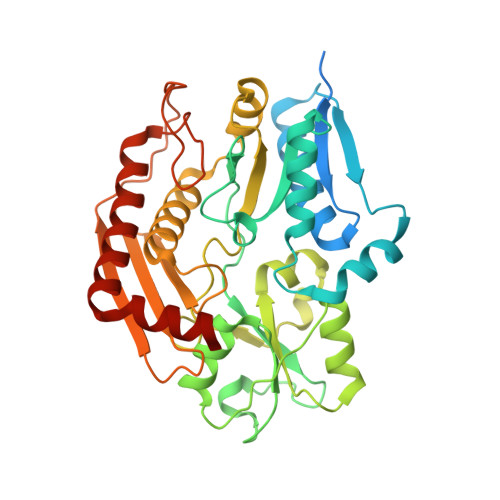Structural basis of pyrrole polymerization in human porphobilinogen deaminase.
Pluta, P., Roversi, P., Bernardo-Seisdedos, G., Rojas, A.L., Cooper, J.B., Gu, S., Pickersgill, R.W., Millet, O.(2018) Biochim Biophys Acta Gen Subj 1862: 1948-1955
- PubMed: 29908816
- DOI: https://doi.org/10.1016/j.bbagen.2018.06.013
- Primary Citation of Related Structures:
5M6R, 5M7F - PubMed Abstract:
Human porphobilinogen deaminase (PBGD), the third enzyme in the heme pathway, catalyzes four times a single reaction to convert porphobilinogen into hydroxymethylbilane. Remarkably, PBGD employs a single active site during the process, with a distinct yet chemically equivalent bond formed each time. The four intermediate complexes of the enzyme have been biochemically validated and they can be isolated but they have never been structurally characterized other than the apo- and holo-enzyme bound to the cofactor. We present crystal structures for two human PBGD intermediates: PBGD loaded with the cofactor and with the reaction intermediate containing two additional substrate pyrrole rings. These results, combined with SAXS and NMR experiments, allow us to propose a mechanism for the reaction progression that requires less structural rearrangements than previously suggested: the enzyme slides a flexible loop over the growing-product active site cavity. The structures and the mechanism proposed for this essential reaction explain how a set of missense mutations result in acute intermittent porphyria.
- Protein Stability and Inherited Disease Laboratory, CIC bioGUNE, Derio, Bizkaia 48160, Spain.
Organizational Affiliation:



















